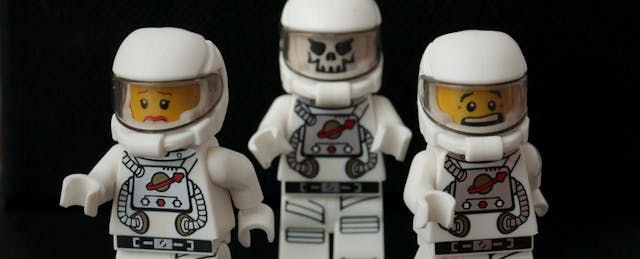We are living in the era of artificial scientific literacy. And for that I blame iPhones, geek culture, and STEM. Especially the term “STEM.”
My recognition of the pervasiveness of the façade began when a reporter asked me, in a discussion about education technology, if I thought the battle for scientific literacy had been won since science was so prevalent in our society.
My inarticulate “huh?” led to examples like the long-term popularity of the “The Big Bang Theory” on television, superhero-and-scientist inspired blockbuster films, and smartphones pressed into all of our faces. Not to mention the high-profile push for STEM education in our schools.
To that I say all that glitters is not gold. Nor is the ability to use the results of scientific discovery the same as understanding the science that fueled the discovery.
It seems to be a common misconception. Heck, the New York Times declared in a recent essay, “We’re All Nerds Now,” stating “never before has the boundary between geek culture and mainstream culture been so porous.” Hours of code and xkcd comics are no longer tucked away as potentially embarrassing evidence of an abnormal inner life. (The progress has been rapid; it was a short 15 years ago that my now-wife felt she had to wait until the third date to admit that she was a Star Trek fan.)
All STEM is not equal. STEM, unpacked, stands for science, technology, engineering, and mathematics. Those commas between the disciplines don’t represent equals signs. They are plus signs.
Yet “STEM” literacy is bandied about as though the shorthand term represents a single thing, and organizations, programs and products are held up as examples of meeting the need for “STEM” education and careers--even if it’s simply a robotics kit, or an app programming club, or Khan Academy math videos.
STEM’s complex beauty is still only skin deep in our society. For proof, I point you to the fear-based hysteria about Ebola’s potential U.S. spread (sometimes referenced, in unintentionally hilarious self-parody, by anti-vaccine advocates), and the “I’m not a scientist” cop-out uttered by politicians who don’t want to recognize politically inconvenient findings of science.
Actual discussion: Parent "I want #Ebola vaccine for my child" Doc "There isn't one, but we have #flushot" Parent "We don't believe in that"
— Dr. Dave Stukus (@AllergyKidsDoc) November 4, 2014
What we have fallen in love with are the trappings of technology and science. Not their substance. Just because you can use an iPhone doesn’t mean you know how to make one, applying scientific principles and engineering processes.
“Scientific literacy and technological literacy are sometimes confused,” says Ann McMahon, vice president of science and education at Pacific Science Center in Seattle. McMahon oversees the Portal to the Public education program in which scientists communicate what they’re working on. The distinction, McMahon says, is science literacy is about, “the questions they ask and the conclusions they draw from their evidence,” while tech literacy is about, “tools they use to collect and process their data and communicate those conclusions.” Scientists, of course, need to have both kinds of chops.
But you needn’t be a scientist to be scientifically literate. Science isn’t a thing, it’s a process of asking a question, gathering evidence through observation and experiments, and testing that against the hypothesis to reach a conclusion.
“Science-literate people may or may not carry out scientific research, but they are able to make sense of it based on the evidence presented by scientists who are asking and answering ‘why’ questions,” McMahon says.
Basically, you have to understand the scientific method.
It’s not like we haven’t been here before. Many of another generation’s kids and adults were awed by technological trappings, too, that seized the popular imagination. But they were much bigger and much more expensive gadgets. Saturn V rockets. Apollo capsules. Lunar rovers.
Still, a lot of those admirers were inspired to become scientists or engineers. Though in some respects the bar was higher back then: You couldn’t buy an actual device an astronaut would use at the mall and try it on like a fashion, wear that patina of STEM literacy, and then dispose of it in two years or less because something newer came out. No, you had to actually commit deeply in terms of interest, time and education in order to play with those cool toys.
Today, it’s easier to see and be hands-on with the technology end result. We have the illusion of “science everywhere,” but it’s a kind of tech theater that’s more entertainment than understanding. It’s a treadmill where the speed of upgrades masks the lack of intellectual forward motion.
That may be enough for most wannabes who are in it for the current geeks-are-cool glory. But, with any luck, the prevalence of tech will again spur a few more kids and adults to realize there’s a lot more beneath the surface.
Because for scientific understanding, tech is an entry point, not an end point.


